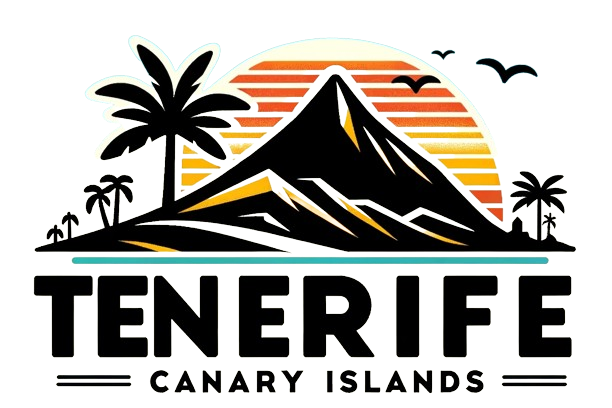Garafía: The Canary Islands’ Most Economically Challenged Municipality
Garafía, a municipality located in the northwest of La Palma, stands out as the area with the lowest average income in the Canary Islands. This small yet significant region faces numerous economic challenges, which are reflective of broader trends affecting rural areas across Spain.
Income Disparities in the Canary Islands
Recent statistics from the Tax Agency, based on income tax returns for 2022, reveal a stark economic divide between urban centers and rural regions in Spain. Garafía has an average gross income of merely €16,997 per year, making it the municipality with the lowest income per inhabitant in the Canary Islands. This figure starkly highlights the economic challenges faced by regions that are far removed from major economic hubs, where opportunities for higher earnings are more prevalent.
The disparity in income levels is not unique to Garafía; it reflects a broader trend within the Canary Islands. Other municipalities with low average incomes include El Tanque (€18,874), Barlovento (€18,897), Vallehermoso (€19,234), and Los Silos (€19,367). These figures indicate a troubling pattern where rural areas in the archipelago tend to have the lowest income levels, exacerbating the challenges faced by their residents.
Garafía’s Economic Landscape
Garafía’s economy is primarily reliant on agriculture, livestock farming, and sustainable tourism. While these sectors play a vital role in sustaining the local population and protecting the environment, they do not provide high income levels. The municipality’s economic landscape is further complicated by an aging population and a lack of large industrial centers, which restrict opportunities for skilled employment. The absence of diverse economic activities limits the potential for growth and development in the area.
Moreover, Garafía’s rugged terrain and limited access to essential services further hinder its economic development. Spanning an area of 103 km², the municipality features steep cliffs, ravines, and arable land, complicating connectivity and the establishment of new economic ventures. The geographical challenges faced by Garafía are emblematic of the difficulties rural municipalities encounter in attracting investment and fostering economic growth.
Natural Attractions and Cultural Significance
Despite its economic struggles, Garafía is renowned for its stunning natural beauty and cultural significance. The municipality is home to several protected areas, including the natural monument of the Costa de Hiscaguán, the Guelguén reserve, and the Pinar de Garafía, which together cover nearly one-third of its territory. This diverse geography ranges from lush green cliffs to snow-capped peaks during winter, such as those found at Roque de los Muchachos. This location is not only a visual marvel but also significant for science, housing the Gran Telescopio de Canarias (GRANTECAN), one of the largest telescopes globally, which attracts researchers and astronomers from around the world.
Garafía’s natural attractions provide a unique opportunity for eco-tourism, which could serve as a catalyst for economic revitalization. By promoting its breathtaking landscapes and biodiversity, the municipality could potentially draw visitors seeking outdoor adventures and a connection to nature, thereby generating additional revenue for local businesses.
Culinary Heritage and Astronomical Significance
Garafía’s rich livestock tradition has given rise to one of the island’s culinary delights: the smoked goat cheese, recognized for its unique flavor and golden rind. This artisanal cheese-making process is a craft that has been passed down through generations, becoming a symbol of the region. The local culinary heritage not only reflects the agricultural practices of the area but also serves as a point of pride for the community.
Additionally, Garafía has a strong connection to astronomy, protected by the “Sky Law” enacted in 1988, which preserves the quality of the night sky. This legislation ensures that Garafía remains one of the premier locations for astronomical observation worldwide. The combination of its natural beauty and clear night skies positions Garafía as a unique destination for both tourists and scientists alike.
Potential Amidst Economic Hardship
While the income statistics paint a stark picture of economic hardship, they also reveal the potential of Garafía. The municipality is rich in unique landscapes and natural resources, positioning it as a valuable area for scientific research, traditional agriculture, and rural tourism. By leveraging its natural assets and cultural heritage, Garafía could explore new avenues for economic development that align with sustainable practices.
Community initiatives aimed at promoting local products, such as the celebrated smoked goat cheese, alongside efforts to enhance eco-tourism, could provide a much-needed boost to the local economy. Furthermore, fostering partnerships with scientific institutions could lead to increased investment and job creation, helping to alleviate some of the economic challenges faced by the residents of Garafía.
Key points
- Garafía has the lowest average income in the Canary Islands at €16,997 per year.
- It ranks among the most economically modest municipalities in Spain.
- The local economy is mainly based on agriculture, livestock, and sustainable tourism.
- Garafía’s rugged terrain limits economic development and connectivity.
- Protected natural areas cover nearly one-third of Garafía’s territory.
- The Gran Telescopio de Canarias is located in Garafía, enhancing its scientific significance.
- Smoked goat cheese is a notable culinary product of the region.
- Garafía’s potential for eco-tourism and scientific research could help revitalize its economy.
